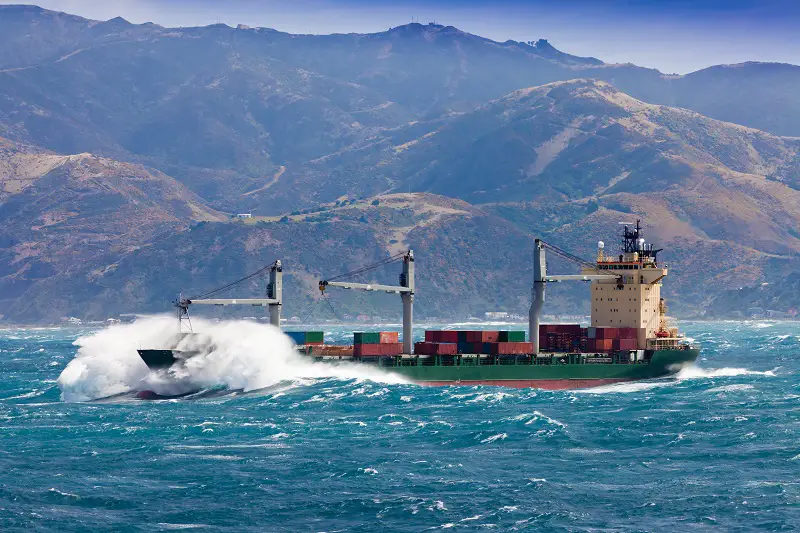In the complex and interconnected world of international trade, it plays a pivotal role in transporting goods across vast distances. However, the ultimate leg of this journey, commonly referred to as the “last mile,” presents unique challenges that shippers, logistics providers, and businesses must navigate effectively to ensure efficient and timely delivery of goods.
Understanding the Last Mile
The last mile in sea freight refers to the final stretch of a shipment’s journey from the port to its ultimate destination, often a residence or business. This phase can be the most challenging, as it involves navigating a variety of logistical, geographical, and operational hurdles.
Urban Congestion
Within densely populated urban landscapes, congestion stands as a formidable adversary to the seamless execution of last-mile deliveries. The presence of narrow streets, perpetual heavy traffic, and scarce parking spaces compounds the intricacies of transporting goods to their final destinations. In this labyrinth of urban sprawl, the importance of devising efficient delivery routes and optimizing delivery windows cannot be overstated. As delivery providers grapple with this urban conundrum, innovative solutions, such as advanced route planning algorithms and off-peak delivery schedules, are increasingly being employed to mitigate the challenges posed by urban congestion and ensure the timely arrival of goods.
Navigating Rural Terrain
On the flip side, last-mile deliveries to rural or remote locations come with their own set of challenges. Rough terrain, inadequate road infrastructure, and longer distances to cover can significantly extend delivery times and increase costs. Developing innovative solutions for reaching these areas efficiently is essential.
E-commerce Explosion
The rise of e-commerce has intensified last-mile challenges. Consumers now expect quick and convenient delivery options, often within hours or days of placing an order. This demand has led to an increase in the volume of shipments and the need for efficient last-mile solutions to meet customer expectations.
Environmental Concerns
With growing environmental awareness, there is increasing pressure to reduce the carbon footprint of last-mile delivery. Traditional delivery methods, such as diesel-powered trucks, contribute to air pollution and greenhouse gas emissions. Finding eco-friendly alternatives, such as electric vehicles or cargo bikes, is a priority for sustainable last-mile logistics.
Technological Advancements
Technology is reshaping last-mile logistics. Innovative solutions like route optimization software, GPS tracking, and autonomous delivery vehicles are streamlining the process and improving efficiency. These advancements hold the potential to revolutionize last-mile delivery in the coming years.
The Role of Data
Data analytics also play a crucial role in last-mile logistics. By collecting and analyzing data on delivery routes, customer preferences, and traffic patterns, companies can make informed decisions to optimize their last-mile operations. This data-driven approach leads to more efficient deliveries and cost savings.
Customer Expectations
Meeting customer expectations is paramount in the last-mile delivery process. Customers demand transparency, real-time tracking, and flexibility in delivery options. Companies that can provide a seamless and convenient delivery experience gain a competitive edge in the market.
The Challenges of Same-Day Delivery
The concept of same-day delivery, while appealing to consumers, presents significant challenges in the last mile. To achieve such swift deliveries, companies must manage inventory efficiently, optimize routes, and have a robust network of distribution centers. Achieving the balance between speed and cost-effectiveness is a constant challenge.
Last-Mile Solutions
In response to these challenges, various last-mile solutions are emerging to enhance the efficiency of sea freight deliveries. Some of these solutions include:
1. Micro-Fulfillment Centers: Setting up smaller fulfillment centers closer to urban areas to reduce delivery times and costs.
2. Drone and Autonomous Vehicle Delivery: Experimentation with drones and autonomous vehicles for faster and more efficient deliveries, especially in less congested or remote areas.
3. Crowdshipping: Utilizing the sharing economy to leverage individuals or local businesses for last-mile deliveries, reducing costs and increasing delivery speed.
4. Locker Networks: Establishing secure locker networks in public areas, allowing customers to pick up their packages at their convenience.
5. Sustainable Transportation: Transitioning to eco-friendly vehicles, such as electric vans and bicycles, to reduce the environmental impact of last-mile delivery.
6. Route Optimization Software: Implementing advanced software solutions to optimize delivery routes, reducing travel time and fuel consumption.
Conclusion
The challenges of last-mile delivery are multifaceted and ever-evolving. From urban congestion to remote rural locations, and environmental concerns to rising customer expectations, businesses and logistics providers must continuously adapt to overcome these hurdles.
Innovation, data-driven decision-making, and the integration of advanced technologies are key to addressing these challenges effectively. As the world of international trade and e-commerce continues to grow, finding efficient, sustainable, and customer-centric last-mile solutions remains essential for the success of global supply chains and the satisfaction of end consumers. By embracing these challenges as opportunities for improvement, the logistics industry can transform the final leg of the journey into a seamless and efficient experience for all.

